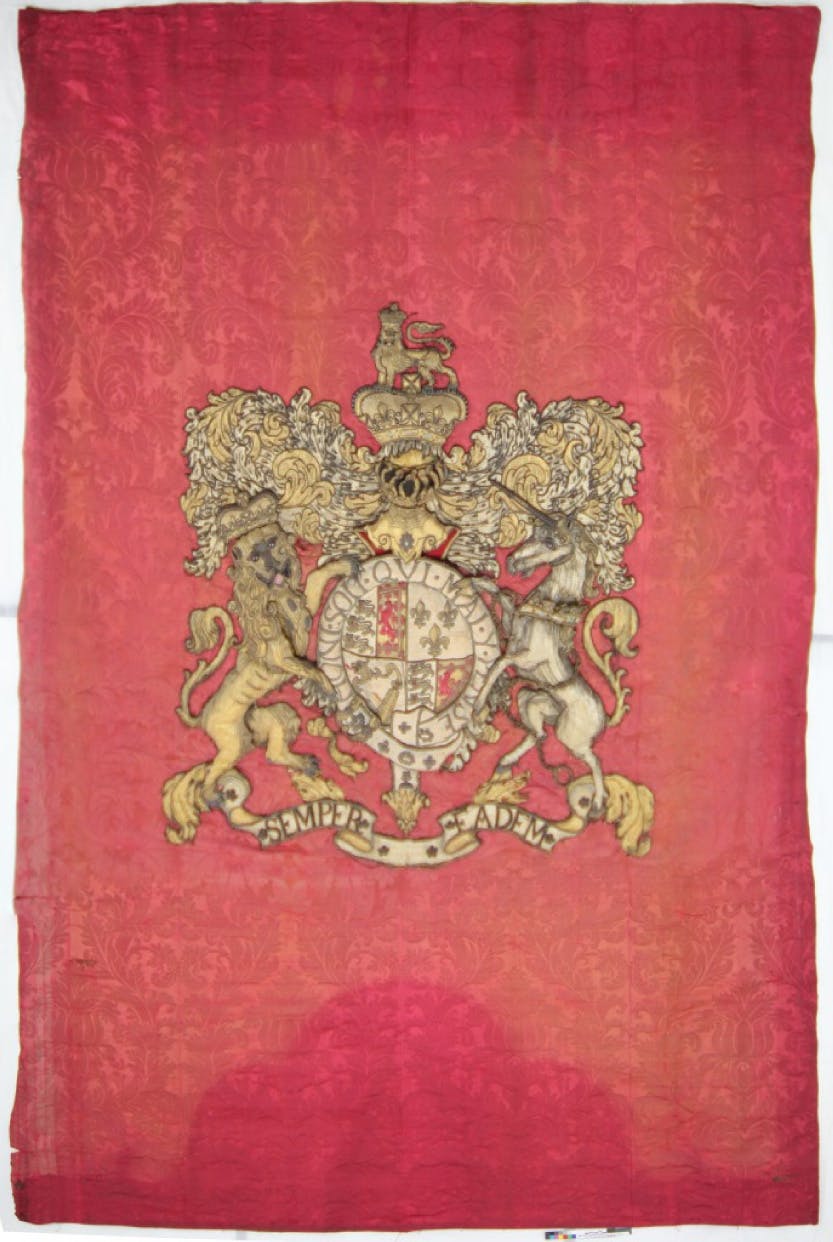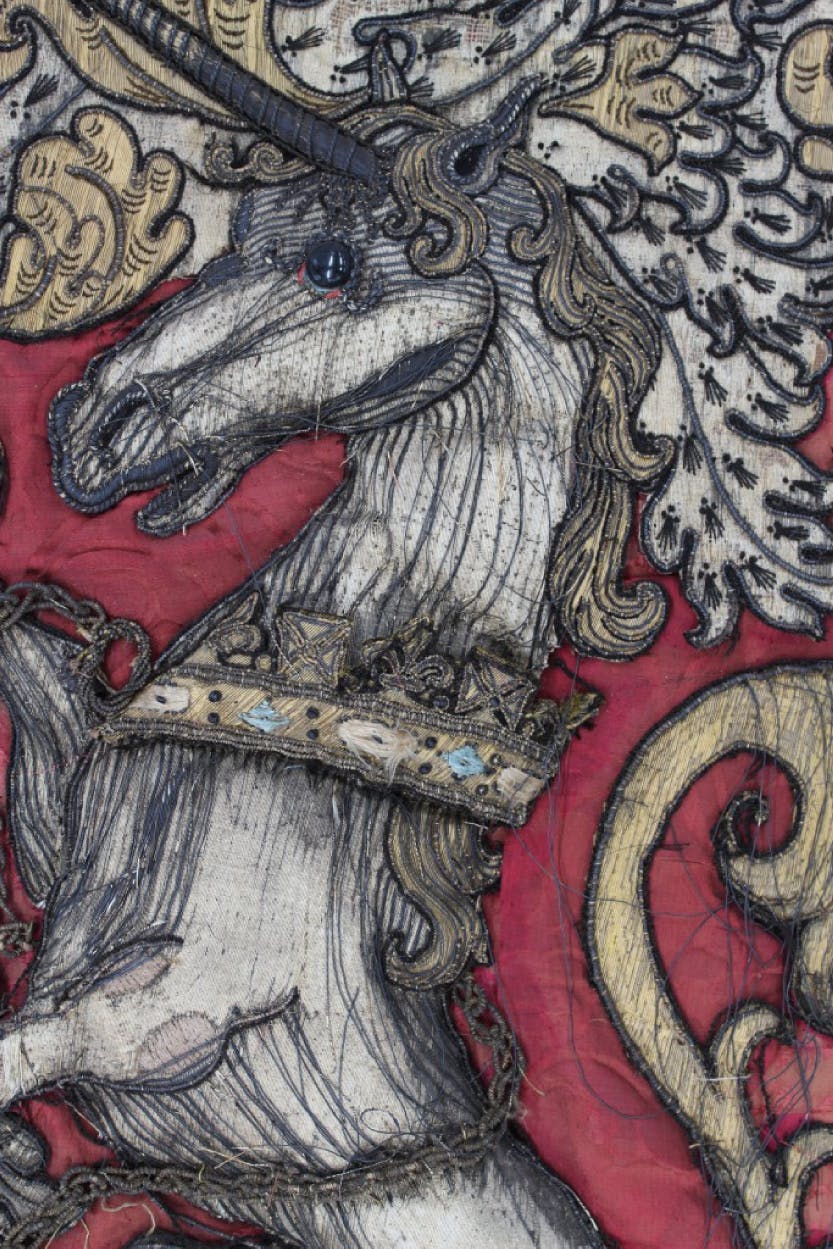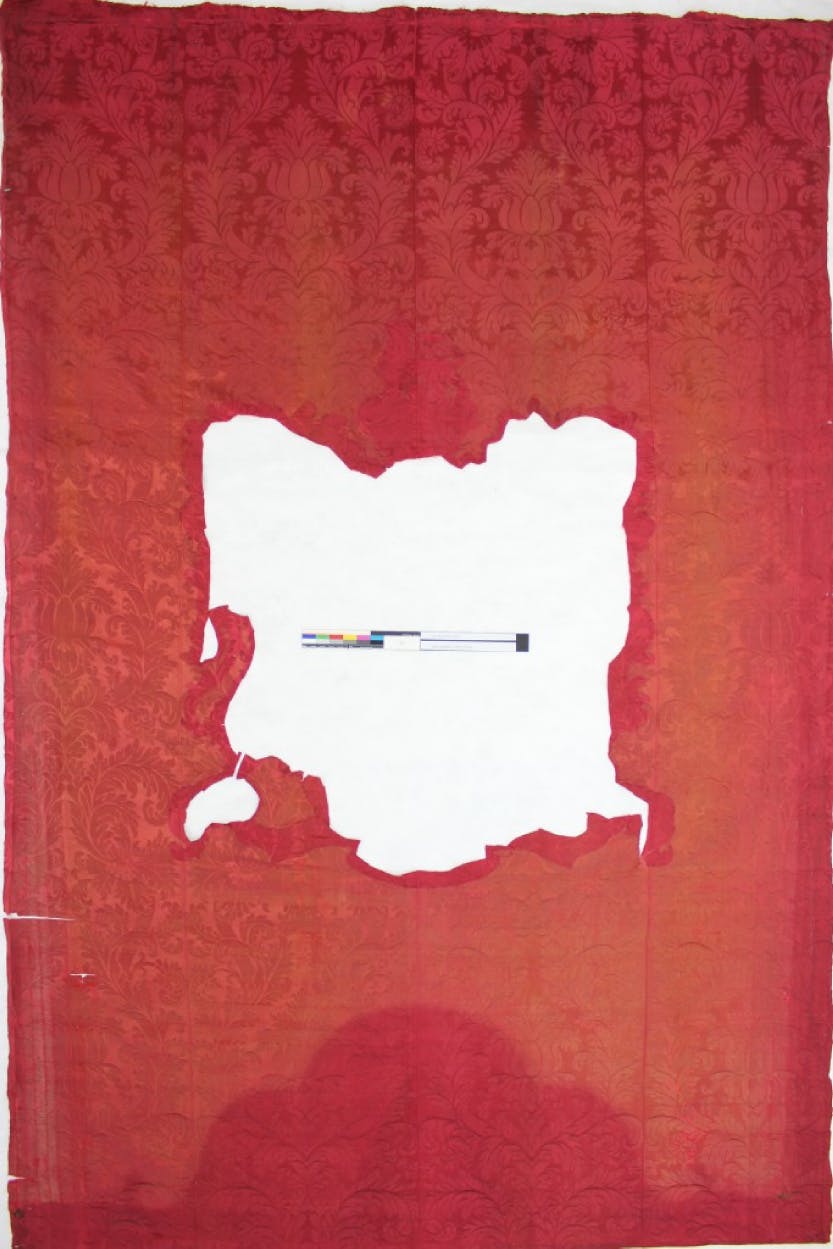Introducing the Cloth of State
Queen Anne's Throne Canopy Conservation
Date: 28 July 2016
Author:
Charlotte Gamper
Throne canopies are complicated objects; this one has 15 separate parts, 12 of which are textiles and all of which need a bit of TLC. This week, I am going to talk about the cloth of state which forms the backdrop of the canopy and is made up of three layers; an embroidered coat of arms stitched to a silk damask hanging with a linen lining.
The embroidery is particularly fragile with long metal threads hanging loose and out of place. After careful consideration we decided that it was best to separate the three layers and individually conserve each one. Separating a textile is always a last resort and only justifiable when not doing so would compromise its stability.
In our palaces the objects are mainly on open display which gives our visitors a more authentic historic experience but means that we have to know that our conservation treatments will be able to withstand this.
Undoing seams as we separate the layers can reveal all sorts of interesting things about a textile including how it was constructed and how it has been repaired; on this occasion we certainly were not disappointed!
When we originally examined the throne canopy we realised that the red silk damask on the cloth of state was not original; it had a different colour tone, was less degraded and had a slightly different pattern. When we released the stitching holding the linen to the back and as we slowly rolled back the lining to our delight we discovered a patch of the original damask left behind the coat of arms!
This content is hosted on YouTube
This content may be using cookies and other technologies for which we need your consent before loading. To view the content, you need to enable cookies for "Targeting Cookies & Other Technologies".
Manage CookiesA further revelation occurred when we released the embroidered coat of arms and found that it was concealing a very large hole!
Now that the layers have been separated, we are embarking on their conservation. We have begun with the silk damask which, though fairly strong, contained years of acidic dust and dirt which we know through experience increases the rate of fibre deterioration over time. The best way to remove this is to wash it away but… we can’t just throw a 300 year-old cloth of state into a washing machine with some supermarket detergent!
Based on experience and scientific testing we know that we must be as gentle as possible, to avoid any damage and help with our goal of long term preservation. We need to keep the textile flat so that we can monitor how it behaves whilst in the wash bath. Conservation-grade detergent is tested and approved by our conservation scientists to ensure that there are no additives such as bleach or enzymes lurking inside.
In addition, we use cold water because warm water will increase chemical reactions in the aged fibres and cause them to weaken further. The short time-lapse video below shows this four and a half hour process in just 110 seconds.
After washing, the textile was laid out flat, realigned and weighted for drying. Total drying time: less than 12 hours.
In our next post we will be revealing the magnificent metal thread emblems on the valances, showing you how we protect them and the approach that we took to replace the three missing emblems.
Charlotte Gamper
Senior Textile Conservator
Acquired with the assistance of the Art Fund. Conserved with assistance from Lord Barnby’s Foundation, Idlewild Trust, The Radcliffe Trust, The Leche trust, Broadley Charitable Trust and the Worshipful Company of Tin Plate Workers alias Wire Workers. We are grateful for their support.
More from our blog

Back to the Cloth of State: Queen Anne's Throne Canopy Conservation
04 October 2016
In July we told you about the hole we discovered behind the coat of arms when separating its layers for treatment. Two months on and we are in the midst of the delicate process of supporting the red damask.

Love between women on the Stuart stage: Queen Mary, Queen Anne, and Arabella Hunt
15 February 2019
In 1675, Princesses Mary and Anne – the future Queen Mary II and Queen Anne – performed in one of the most glittering and glamorous performances ever to grace a London stage. Callisto: Or, The Chaste Nymph, a court masque, was commissioned by Mary and Anne's uncle Charles II and written by John Crowne. The production consumed daily life at Whitehall Palace for six months and, like many stories of the dramatic stage, has an awful lot of LGBT+ history to uncover.

'The new Terrors of Death': Dr John Arbuthnot, Queen Anne’s favourite physician
11 March 2024
Dr John Arbuthnot was among the army of medical specialists who were summonsed to serve the Royal family in the 18th century. Arbuthnot is little remembered today, but he was 'the Queen’s favourite physician' — a gentle-mannered confidante to courtiers, politicians, poets, writers and ladies-in-waiting alike.








